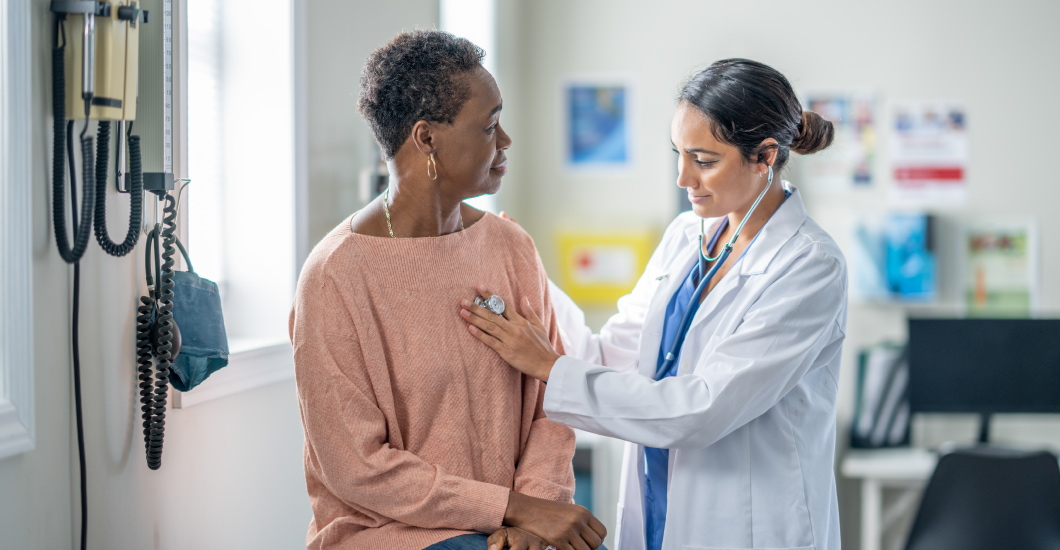Breast cancer is one of the most common health challenges women face today, touching millions of families around the world. According to a 2025 study published in Nature Medicine (Kim et al.), about 2.3 million women were diagnosed with breast cancer in 2022, and around 670,000 died from it.
While these numbers can sound overwhelming, there’s also hope. Thanks to better awareness, early detection, and advances in treatment, more people than ever are surviving and living well after a diagnosis.
At Sanitas Medical Center, we believe that understanding breast cancer and staying proactive with regular screening are key steps toward long-term health and peace of mind.
What is breast cancer?
Breast cancer starts when cells in the breast grow out of control and form a lump or mass. Over time, these cells can spread to nearby areas or other parts of the body.
The two most common types are:
- Ductal carcinoma, which starts in the milk ducts
- Lobular carcinoma, which begins in the lobules (the glands that make milk)
Both men and women can get breast cancer, though it’s far more common in women.
How common is breast cancer?
In the United States, breast cancer is the most common cancer among women, aside from skin cancers. It makes up about 30% of all new cancers in women each year—about 1 in 3 cases.
The American Cancer Society (ACS, 2025) estimates that this year:
- 316,950 new cases of invasive breast cancer will be diagnosed in women.
- About 42,170 women are expected to die from breast cancer.
The average age for diagnosis is 62, though breast cancer can occur at any age. It’s much less common before age 45 but becomes more frequent as women get older.
Understanding your risk
Every woman has some risk of developing breast cancer, but the level of risk varies from person to person. In the U.S., the average lifetime risk is about 13%, or 1 in 8 women.
Things you can’t change:
- Age: Risk increases as you get older.
- Family history: Having a close relative with breast cancer raises your risk.
- Inherited genes: Mutations in BRCA1 or BRCA2 can significantly increase lifetime risk.
- Reproductive history: Starting your period early (before 12) or reaching menopause after 55 increases lifetime hormone exposure.
Things you can control:
- Weight: Being overweight after menopause increases risk.
- Alcohol: Even one drink a day can slightly raise the risk.
- Physical activity: Staying active helps protect your health.
- Smoking: Avoiding tobacco supports overall wellness.
- Hormone therapy: Using hormone replacement therapy for many years can increase risk.
You can’t change your genes or age, but you can make healthy lifestyle choices and get screened regularly.
The good news: survival rates are rising
Thanks to early detection and better treatments, survival rates for breast cancer have improved dramatically over the years. Today, the five-year survival rate for all stages combined is about 91%. When breast cancer is found early—before it spreads—the survival rate jumps to 99%.
These numbers show how critical early detection is. When cancer is found early, treatment is more effective and recovery is much more likely.
Trends and what’s changing
Recent research shows a slight increase in breast cancer diagnoses, about 1% per year. The rise is most noticeable among women under 50. Experts believe this may be linked to lifestyle factors, such as:
- Carrying extra body weight
- Having children later in life or not at all
- Using hormonal birth control for extended periods
Despite the increase in cases, outcomes continue to improve. Early detection through regular breast cancer screening makes all the difference.
Breast cancer screening: the most powerful tool
The goal of breast cancer screening is simple—to find cancer early, before symptoms appear. Detecting breast cancer early makes it easier to treat and improves your chances of a full recovery.
The most common screening test is a mammogram, which uses X-rays to look for early signs of cancer that can’t be felt by touch.
When should you start screening? The American Cancer Society recommends:
- Ages 40–44: You can choose to start yearly mammograms after discussing your options with your doctor.
- Ages 45–54: Get a mammogram every year.
- Ages 55 and older: You can continue yearly or switch to every two years, as long as you’re in good health.
What about breast self-exams?
Research shows that breast self-exams alone aren’t as effective as mammograms for finding cancer early. Still, knowing your own body is important.
If you notice changes—such as a lump, swelling, skin dimpling, or nipple discharge—contact your healthcare provider. It’s always better to check and be sure.
Signs and symptoms to watch for
Even with regular screening, it’s important to stay alert for any changes. Some signs of breast cancer include:
- A new lump in the breast or underarm
- Swelling or thickening of the breast
- Skin dimpling or puckering
- Redness or flakiness on the breast or nipple
- Nipple discharge (other than breast milk)
- A change in breast size or shape
Not all lumps are cancer, but they should always be checked by a professional.
The takeaway
Breast cancer is common, but it’s also one of the most treatable cancers when found early. Regular mammograms and open communication with your healthcare provider can help detect problems before they become serious.
At Sanitas Medical Center, we believe early detection saves lives. Our caring team will guide you through screening, answer your questions, and help you make the best choices for your health.
If you’re due for your breast cancer screening or want to talk about your risk factors, don’t wait. Book an appointment today at Sanitas Medical Center.
Together, we can help you stay informed, stay strong, and stay healthy.



